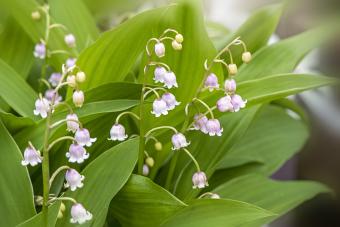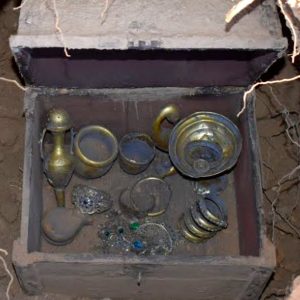
cjp / iStock via Getty Images
Every gardener dreams of beautiful spring flowers during the dark days of winter and looks forward eagerly to the first burst of spring color. However, with all the different types of spring flowers that exist, choosing which ones to plant in your garden can be a tough decision. Spring arrives at different times depending on where you live, but the sequence of blooms is similar in most places. With that in mind, make a list of the names of spring flowers you’re eager to grow in your garden before heading out to get your seeds and plants.
Popular Spring Flowers for Late Winter or Early Spring
While some gardeners can enjoy year-round blooms, others have to carefully plan for the first flowers of spring. This list contains the best late winter or early springtime flowers. Experienced gardeners often create vignettes in one area to make the most of this early color, such as planting a pool of winter aconite at the feet of a witch hazel.
- How Long Do Tulips Last? Tips to Keep Them Fresh
Winter Aconite

Leo Malsam /iStock via Getty Images
Also known as Eranthis, these pale yellow blooms might be considered insignificant later in the year, but they are a joyous sight when they push through the snow. Their bright blossoms are especially wonderful along walkways and near the entry of your home, where you can admire them every time you step outside.
Witch Hazel

OE993 / iStock via Getty Images
Witch hazel shrubs add a wonderful touch of yellow in the early spring garden. Some cultivars bloom red, which is particularly striking if there’s still snow on the ground. Witch hazel grows well in shady areas and moist, well-drained soil.
Crocus

VanidarEddy / iStock via Getty Images
The earliest varieties, such as Crocus chrysanthus, Crocus sieberi and Crocus tommasinianus, bloom through the snow. These are the small crocus that usually flower in shades of purple or yellow. Crocus can also easily be grown in containers and window boxes.
Hellebore

Hellebore are often known by common names such as Christmas Rose and Lenten Rose in areas with mild winters. There are about 20 species of hellebore, and almost all of them bloom sometime between February and May.
Camellia

This beautiful shrub has lovely blossoms in mild winter climates or early spring in slightly harsher areas. Camellia blooms in shades of pink, red, and white and has a wide variety of flower forms including single, double, anemone, rose, and others.
Snowdrop

Haidamac / iStock via Getty Images
Snowdrop is another early bulb that sometimes blooms even through the snow. These tiny white flowers can be hard to see if there’s still snow on the ground, so it’s a good idea to plant them in areas where you’ll be likely to spot them as soon as they emerge.
Chionodoxa

User10095428_393 / iStock via Getty Images
Chionodoxa is commonly called Glory of the Snow. These pale blue flowers bloom as the snow melts. They look wonderful naturalized in lawns or planted as large drifts in flower beds.
Pansy

Cool growers, pansies bloom early and hardy to frost and snow. They will continue to bloom until the weather turns hot. During hot weather, it’s a good idea to trim them back and keep them well-watered. They’ll perk up again once cool weather returns in fall.
Early Spring Flowers
Early spring brings rain, mud, and more flowers. The flowers that bloom in spring, especially those that bloom in early spring, are those that thrive when the weather is still cool and there’s still a danger of frost. Look for these favorites among the first flowers of spring.
Daffodil

No list of spring flowers would be complete without daffodils. The earliest narcissi appear in early spring, especially small cultivars like Tête-à-Tête.
Iris Reticulata

agatchen / iStock via Getty Images
The large iris is a summer pleasure, but this small beauty is an early spring treasure. Also sometimes called netted iris or golden netted iris, these tend to grow low to the ground, forming a dense carpet of vibrant spring blooms.
Forsythia

KiHoon / iStock via Getty Images
This bright yellow shrub literally screams “Springtime!” They grow up to eight feet tall and make a wonderful hedge. You can also cut the branches in early spring, just after the flower buds form, and force them indoors, bringing that bright, sunny yellow into your home to enjoy.
Scilla

SvetlanaKlaise / iStock via Getty Images
The small bulbs of scilla produce wonderful blue and purple blossoms. This is another tiny flower that works really well naturalized in a lawn. You can also plant it in drifts under trees and shrubs to provide beauty before the bigger plants are fully leafed out.
Anemone

fotolinchen / iStock via Getty Images
The ‘Blanda’ species of anemone produces pale blue and white starry blossoms for the spring garden. They’re hardy in Zones 6 through 9, and if the white blooms of ‘Blanda’ aren’t your thing, they also bloom in shades of pink, purple, or red as well.
Pussy Willow

Salix discolor and Salix caprea varieties of pussy willow were standard in many grandmothers’ gardens, but new varieties have larger and more strongly colored catkins to delight today’s gardeners. The fuzzy catkins are a sure sign of spring, and can be cut to add to spring flower arrangements and wreaths.
A List of Mid-Spring Flowers
As the days start becoming a little warmer, many of the most popular springtime flowers start blooming. It’s also worth noting that many of these popular spring flowers, especially daffodils and tulips, also have early, mid, and late spring varieties, so you can extend your bloom season even more.
Daffodil

hsvrs / iStock via Getty Images
Daffodils are the glory of the mid-spring garden flowers. Large, late varieties like ‘King Alfred’ and ‘Mount Hood’ are brilliant even on rainy days.
Tulip

Jaymel Gonzalez / iStock via Getty Images
On everyone’s list of spring flowers, tulips are starting their long period of bloom in mid-spring. You can also find varieties that bloom in late spring, so you can enjoy tulips even longer.
Rhododendron and Azaleas

OGphoto / iStock via Getty Images
Both of these gorgeous flowering shrubs are just starting their display in mid-spring. These do best in areas that get partial shade, especially during the heat of summer.
Muscari

Muscari, also known as grape hyacinths, are often planted with daffodils and tulips since they’re low-growing and hug the ground beneath those taller flowers. These are another good option for a container or window box as well.
Redbud Trees

PETER HAYNES / iStock via Getty Images
The branches of redbud trees are outlined with wonderful pink blooms before their leaves appear. They provide a vibrant focal point in the garden when most trees are still nothing but bare branches.
Dogwood Trees

Cavan Images / iStock via Getty Images
Dogwood trees, with their stunning white or soft pink blossoms, are breathtaking in the spring garden. The large flowers are also an important food source for early season pollinators.
Magnolia Tree

The star magnolia, Magnolia stellata, is the first to bloom. Its big, soft pink flowers are encased in fuzzy buds, and when the petals fall, it looks like the surrounding ground is covered in pink snow.
Trillium

Catherine Egger / iStock via Getty Images
Trillium is just one of the many wildflowers that bloom before the large trees are fully leafed out. The three-petaled white flowers prefer moist, fertile soil and are often found growing wild in forests.
Ornamental Cherry and Crabapple

Steve Hamilton / iStock via Getty Images
Ornamental forms of Cherry and Crabapple trees are beautiful in mid-spring. They bloom in either white or pink, depending on the variety, and their flowers last for a week or more.
Hyacinths

Alexander Baluev / iStock via Getty Images
These spring flowers bring scent as well as color to the spring garden. Hyacinths are one of the most strongly scented flowers, perfuming the garden with their heady fragrance. They’re available in a wide variety of colors and grow well with daffodils and tulips.
Primrose

Jewels in the spring garden, Primula veris (Cowslip) and Primula vulgare (Common primrose) are the best known, but you will find many varieties are available in garden centers.
Late Spring Flowers
By late spring, the days are getting longer and both the days and nights are much warmer. Danger of frost has passed in most areas, and it’s almost time for the summer garden to explode in a riot of color. These colorful spring flowers bridge the gap between spring and summer beautifully.
Lily of the Valley

The delicate blossoms of Lily of the Valley are little, white, bell-shaped flowers that dangle from gently arching stems. This highly fragrant flower typically blooms in late spring, but it can bloom earlier in years with mild winters.
Magnolia Tree

Nahhan / iStock via Getty Images
Magnolia x soulangiana, the saucer magnolia, is a beautiful late spring bloomer. Having one of these late spring magnolias as well as a star magnolia will give you an extended blooming season for these gorgeous flowers.
Lilac

Lilacs, with their wonderfully scented late spring flowers, are old-fashioned favorites. Most grow into large shrubs, but there are also smaller varieties available, and you can find them with a wide variety of bloom colors including light purple, dark purple, pink, rose, white, and magenta.
Spiraea

Rvo233 / iStock via Getty Images
Spireaea shrubs are an old-fashioned favorite. Their blooms last a long time, and they’re a favorite of many late spring pollinators.
Peonies

Janny2 / iStock via Getty Images
Peonies, with their huge, fragrant blooms, carry the garden from late spring into summer. They can be found in nearly any bloom color and look wonderful, both as drifts or hedges and as individual plantings.
Allium

EdwardSamuelCornwall /iStock via Getty Images
Somewhat prosaically called the “flowering onion,” this bloom is spectacular. The large, round blooms, which are actually made up of dozens of smaller, star-shaped flowers, are most often found in shades of purple and white.
Wood Anemone

Anemones are always lovely in the wilderness garden. They’re also a great addition to the edges of shrub borders, where they can still enjoy the shelter of the taller plants but can also be admired.
Jack in the Pulpit

MelodyanneM / iStock via Getty Images
Jack in the Pulpit is a woodland wildflower that grows well in partial shade and moist, well-drained soil. It’s a favorite in spring, and can often be spotted in the woods along with other late spring ephemerals.





